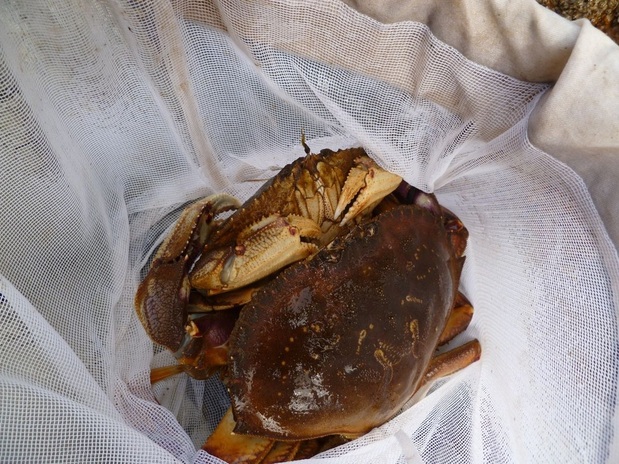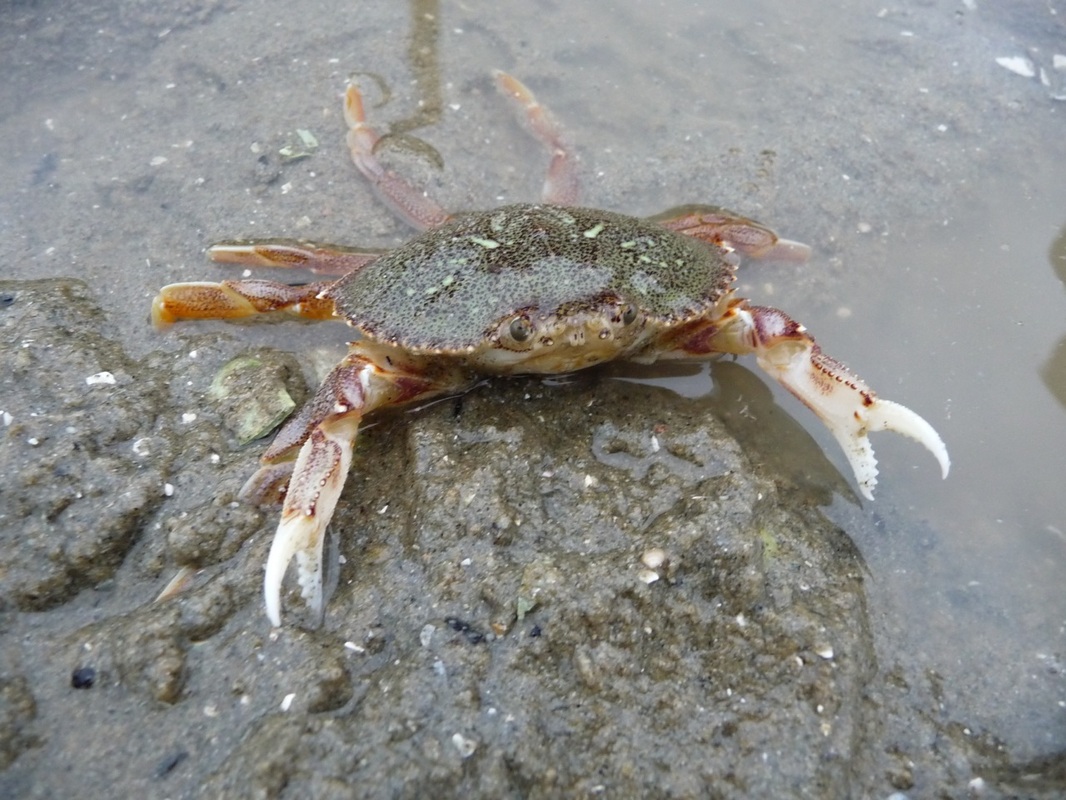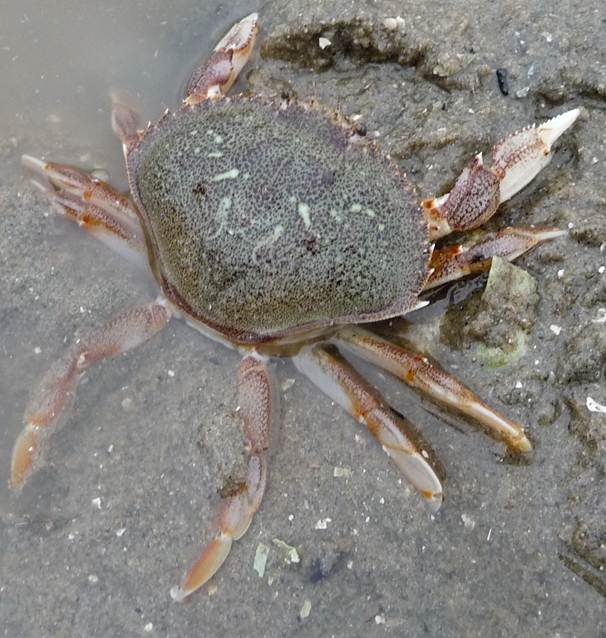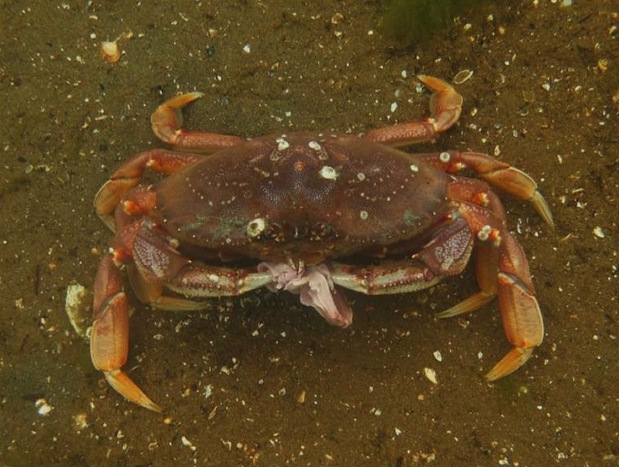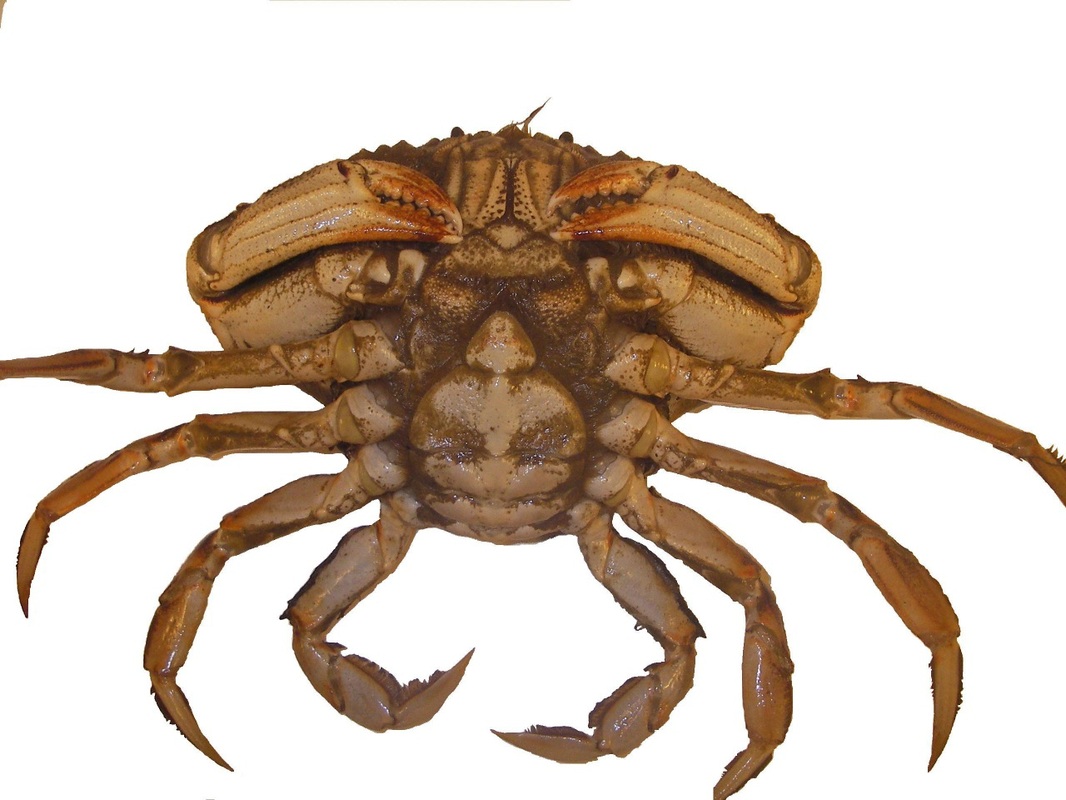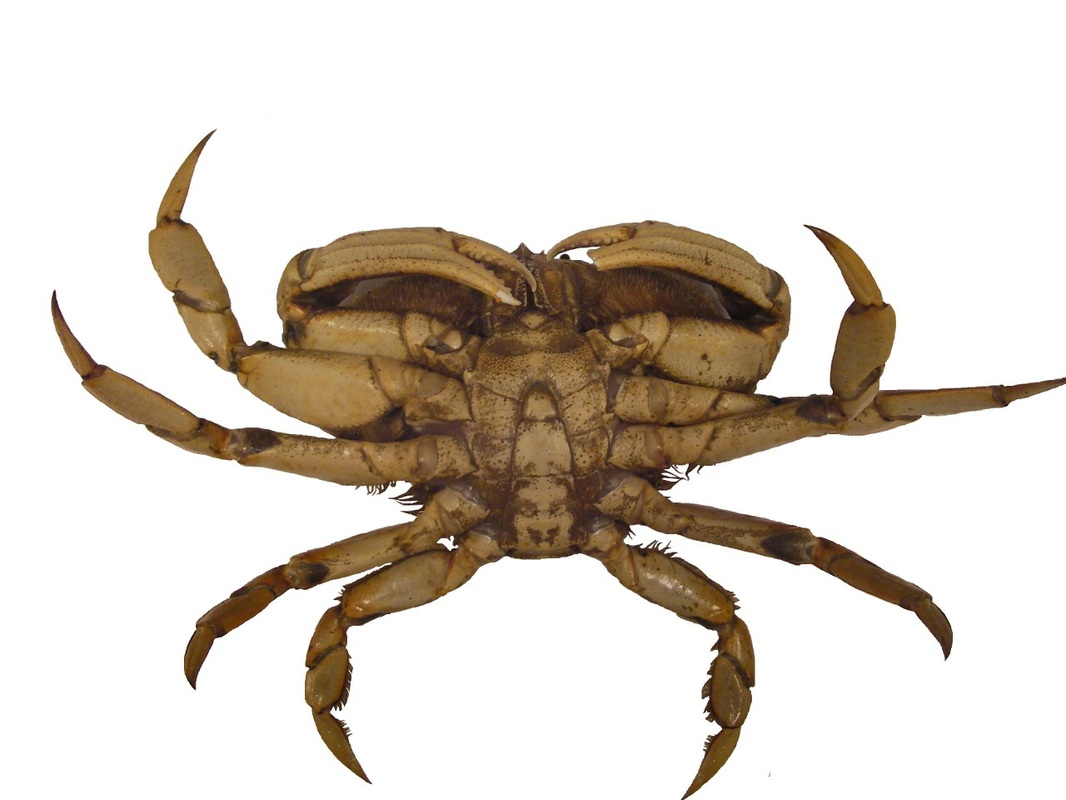Dungeness crab • Metacarcinus magister, Cancer magister • Heiltsuk/Haíɫzaqv - k̓ínáxv • Nuxalk - k'inacw
|
Top left: adult dungeness crabs photographed by an ES 470 participant. Top right: a dungeness crab eating. Middle and bottom left: juvenile dungeness crabs photographed by Chanda Brietzke. Bottom right: undersides of female (left) and male (right) adult dungeness crabs. Photos by Josh Silberg.
|
Identification
This species of crab is generally grey-brown, with some purple on its carapace. The underside of the crab is yellow, as are the claws, which are tipped with white and bear many spiny ridges. The carapace is widest at the 10th and largest tooth. Widths reach 18 cm in females and 25 cm in males.
Habitat & Range
This crab is found along the Pacific coast of North America from Alaska to California. It lives from the intertidal to depths of 225 m, generally on sandy or muddy substrates, or in eelgrass beds.
Similar Species
The slender cancer crab (Cancer gracilis) may be mistaken for the dungeness, however it is a smaller species, growing to only 11 cm wide. The carapace shape differs slightly, with the widest point at the 9th tooth and edged with white. The legs and claws are purple, as opposed to yellow in the dungeness, although they are still white-tipped. The slender cancer crab also lacks spiny ridges on its claw segments, though it does have two large teeth on each dactyl of the pincer.
The dungeness may be confused with a juvenile red rock crab (Cancer productus), though the pincers of the lattter are tipped with black rather than white. Their carapace shape differs as well, with the red rock crab having coarser, larger toothing near the front than the dungeness.
Human Uses
The dungeness crab is harvested at subsistence, recreational and commercial levels by First Nations and other people in the region. It is preferred over the red rock crab because it is generally more abundant and yields more meat. Click here for a video of dungeness crab fishing.
iNaturalist
https://www.inaturalist.org/taxa/63697-Metacarcinus-magister
This species of crab is generally grey-brown, with some purple on its carapace. The underside of the crab is yellow, as are the claws, which are tipped with white and bear many spiny ridges. The carapace is widest at the 10th and largest tooth. Widths reach 18 cm in females and 25 cm in males.
Habitat & Range
This crab is found along the Pacific coast of North America from Alaska to California. It lives from the intertidal to depths of 225 m, generally on sandy or muddy substrates, or in eelgrass beds.
Similar Species
The slender cancer crab (Cancer gracilis) may be mistaken for the dungeness, however it is a smaller species, growing to only 11 cm wide. The carapace shape differs slightly, with the widest point at the 9th tooth and edged with white. The legs and claws are purple, as opposed to yellow in the dungeness, although they are still white-tipped. The slender cancer crab also lacks spiny ridges on its claw segments, though it does have two large teeth on each dactyl of the pincer.
The dungeness may be confused with a juvenile red rock crab (Cancer productus), though the pincers of the lattter are tipped with black rather than white. Their carapace shape differs as well, with the red rock crab having coarser, larger toothing near the front than the dungeness.
Human Uses
The dungeness crab is harvested at subsistence, recreational and commercial levels by First Nations and other people in the region. It is preferred over the red rock crab because it is generally more abundant and yields more meat. Click here for a video of dungeness crab fishing.
iNaturalist
https://www.inaturalist.org/taxa/63697-Metacarcinus-magister
References
Cancer magister (Dana 1852). Marine Biodiversity of British Columbia. Accessed 09/02/2013.
Harbo, R. M. (1999). Whelks to whales: Coastal marine life of the Pacific Northwest. Madeira Park, BC: Harbour Publishing. P. 78.
Maxwell, J., Cowles, D., and Helmstetler, H (2011). Metacarcinus magister (Dana, 1852) Schweitzer and Feldmann, 2000. Invertebrates of the Salish Sea. Rosario Beach Marine Laboratory. Accessed 20/03/2015.
Authors and editors of page
Chanda Brietzke, Kelly Fretwell, and Brian Starzomski (2013).
Cancer magister (Dana 1852). Marine Biodiversity of British Columbia. Accessed 09/02/2013.
Harbo, R. M. (1999). Whelks to whales: Coastal marine life of the Pacific Northwest. Madeira Park, BC: Harbour Publishing. P. 78.
Maxwell, J., Cowles, D., and Helmstetler, H (2011). Metacarcinus magister (Dana, 1852) Schweitzer and Feldmann, 2000. Invertebrates of the Salish Sea. Rosario Beach Marine Laboratory. Accessed 20/03/2015.
Authors and editors of page
Chanda Brietzke, Kelly Fretwell, and Brian Starzomski (2013).
